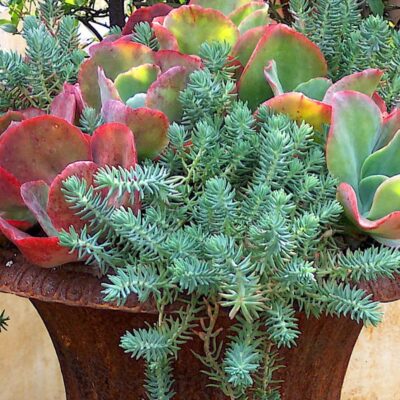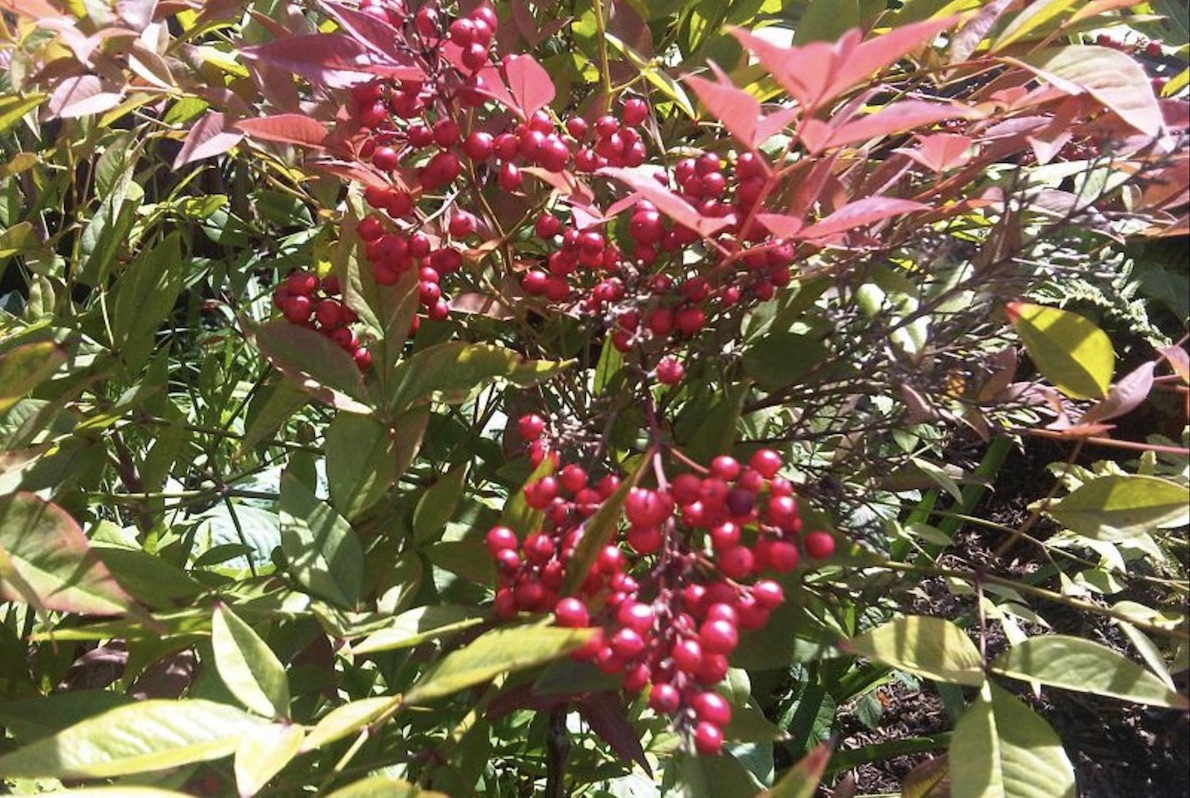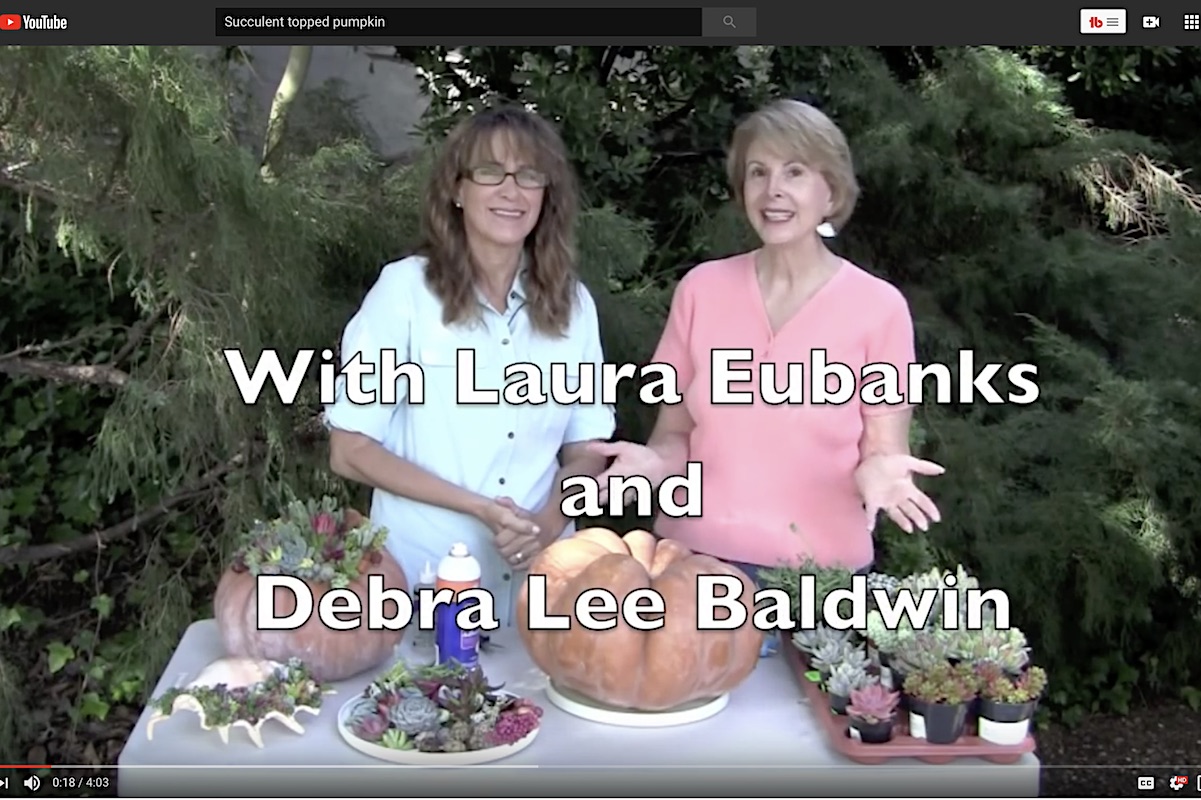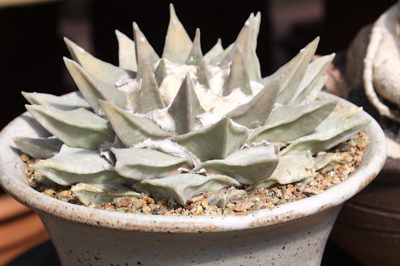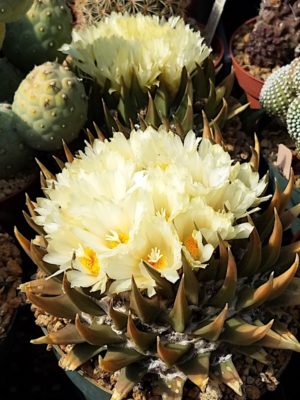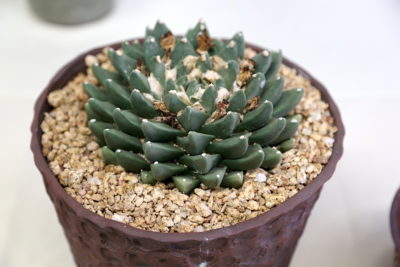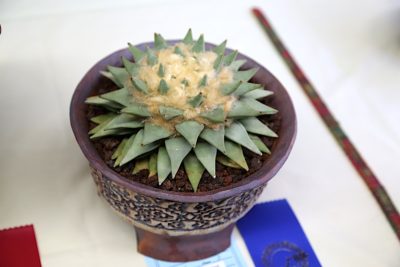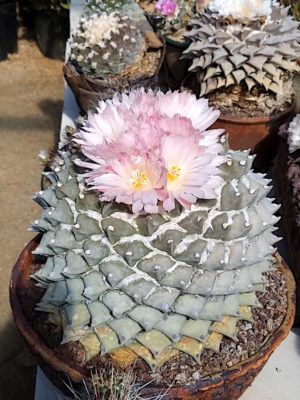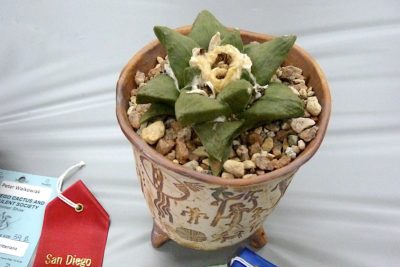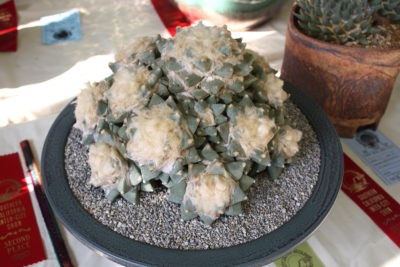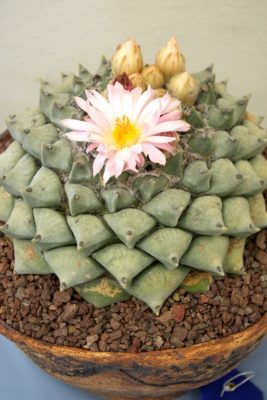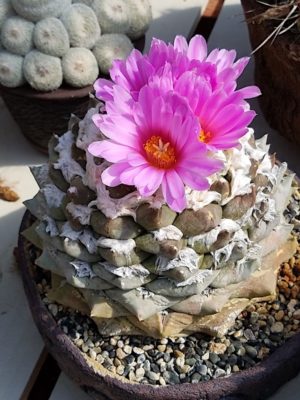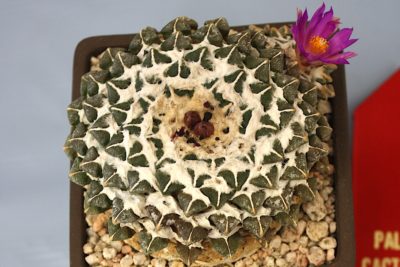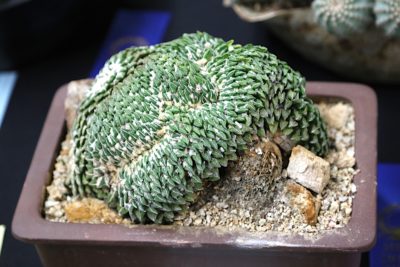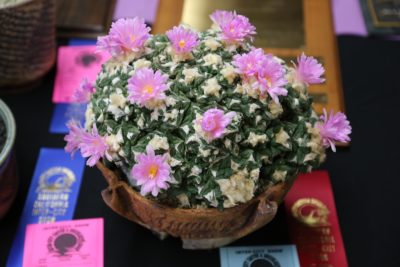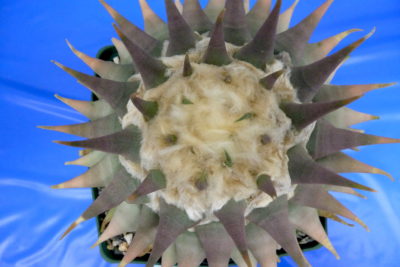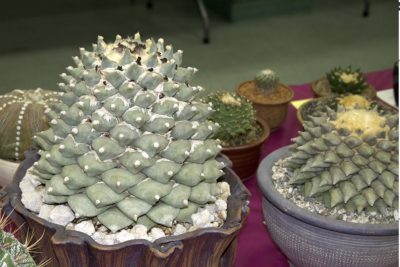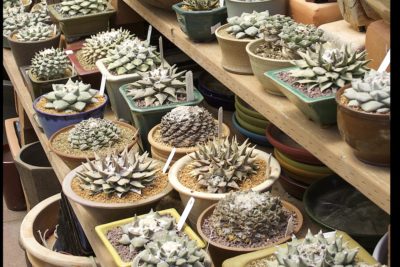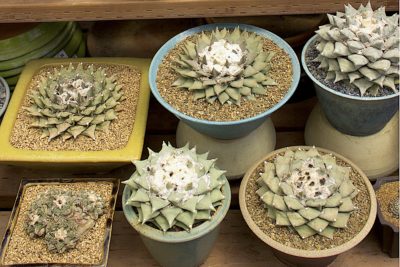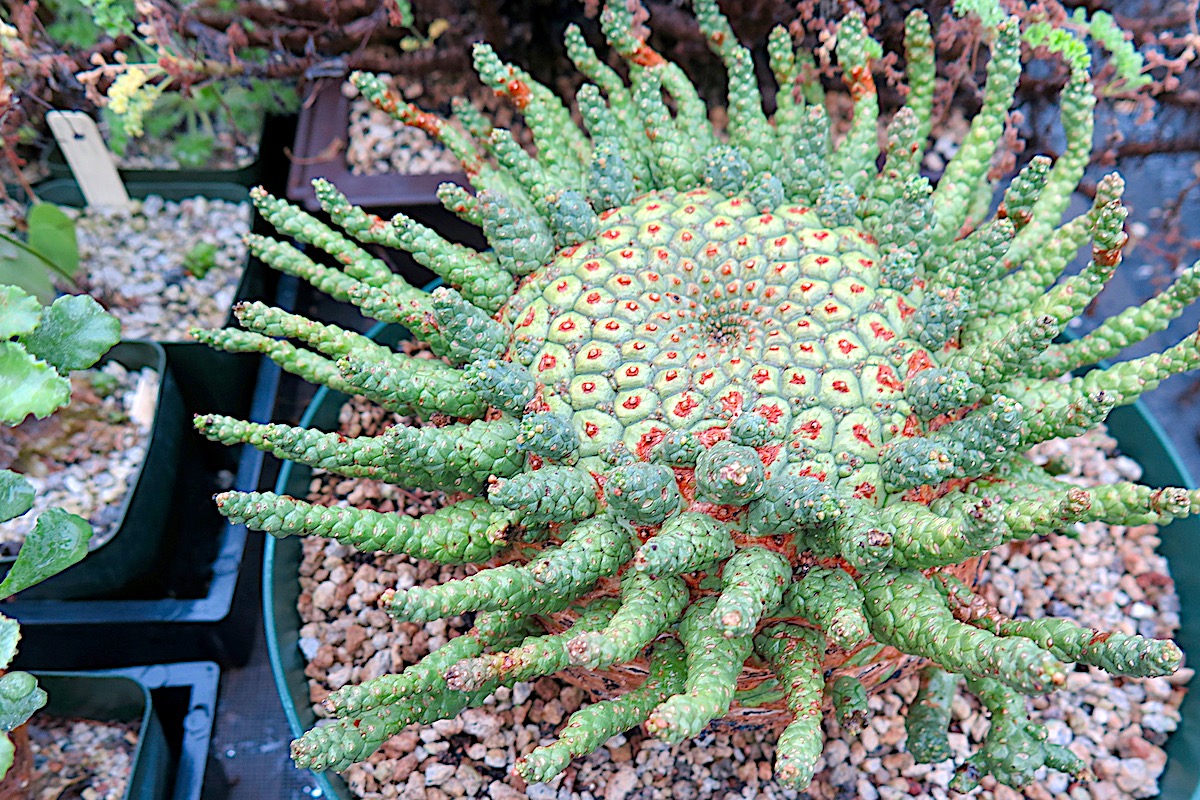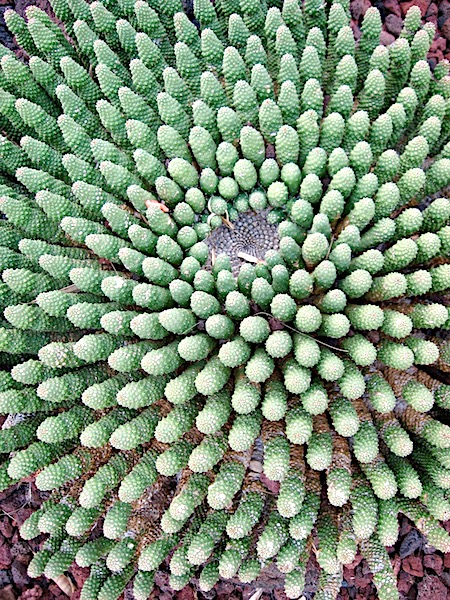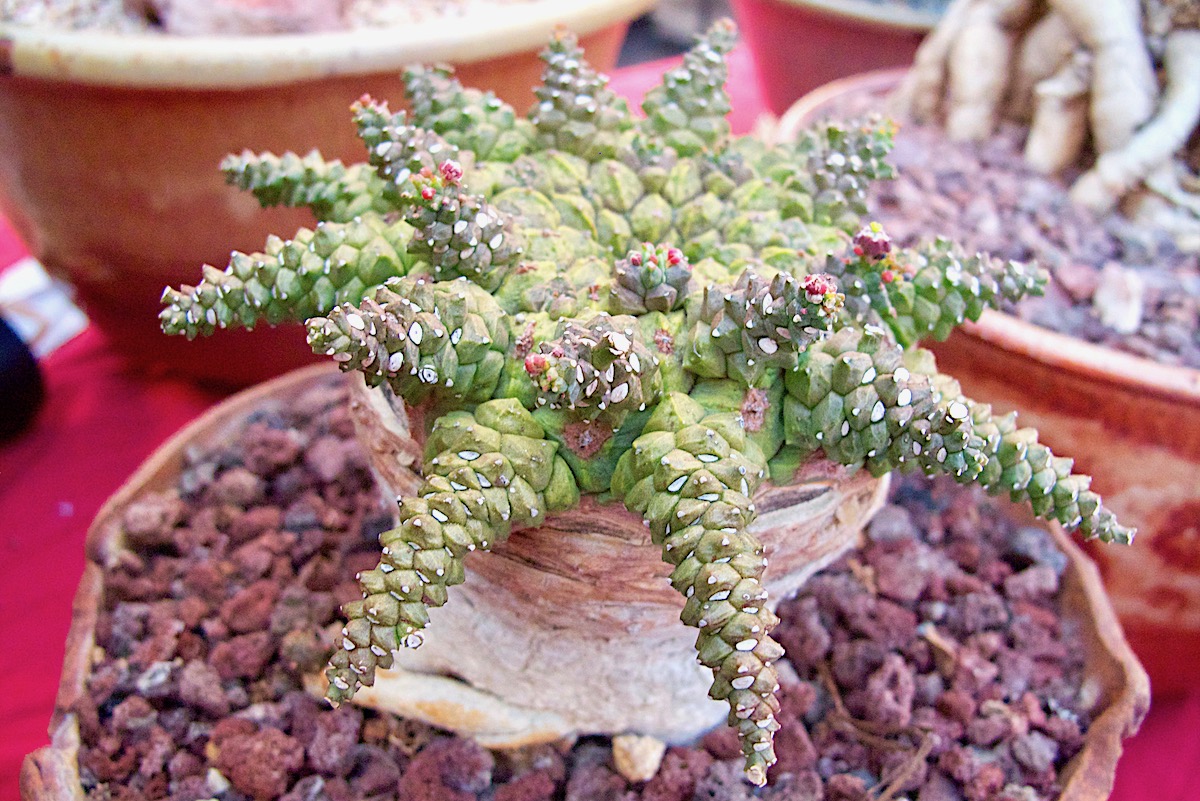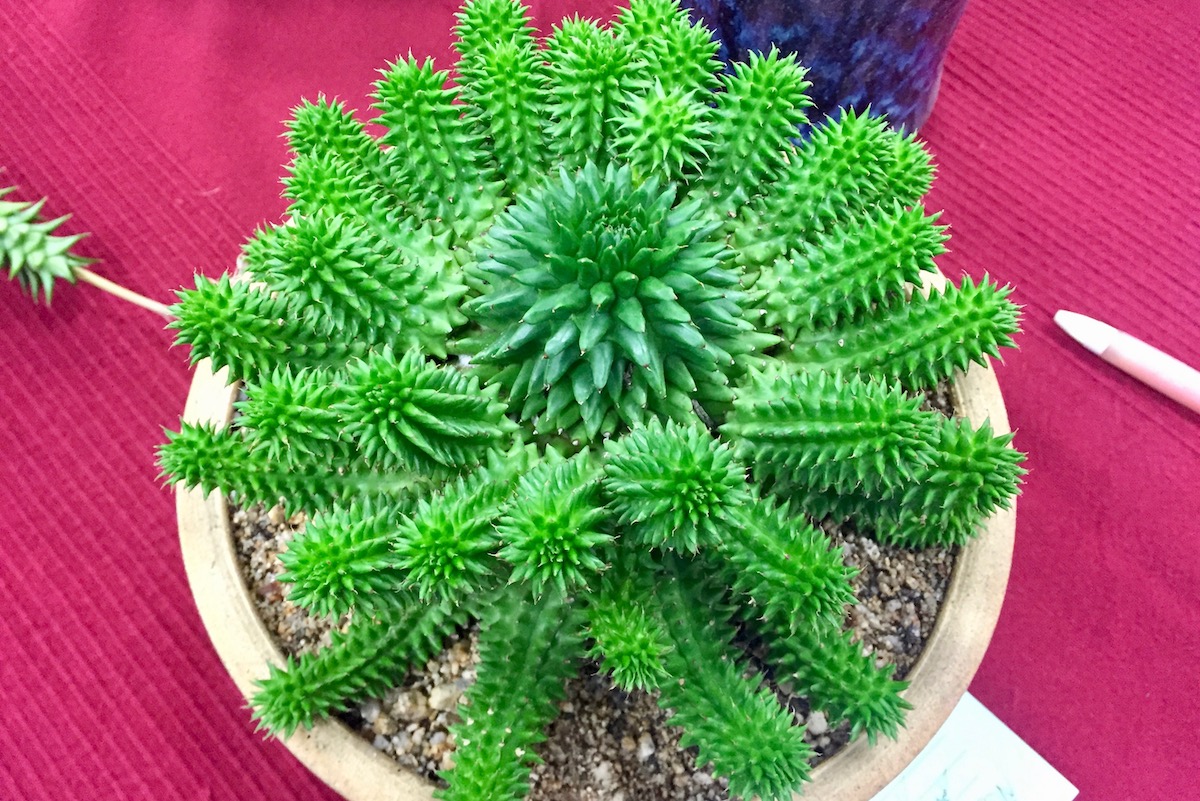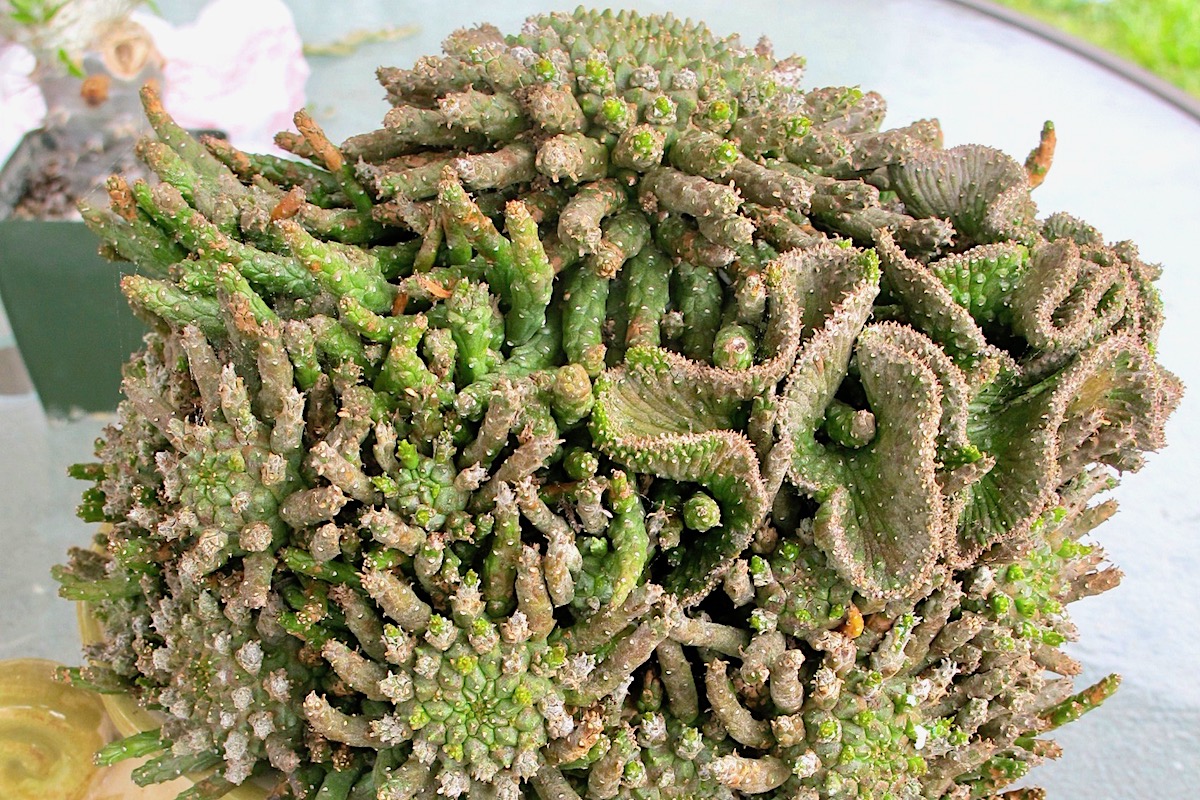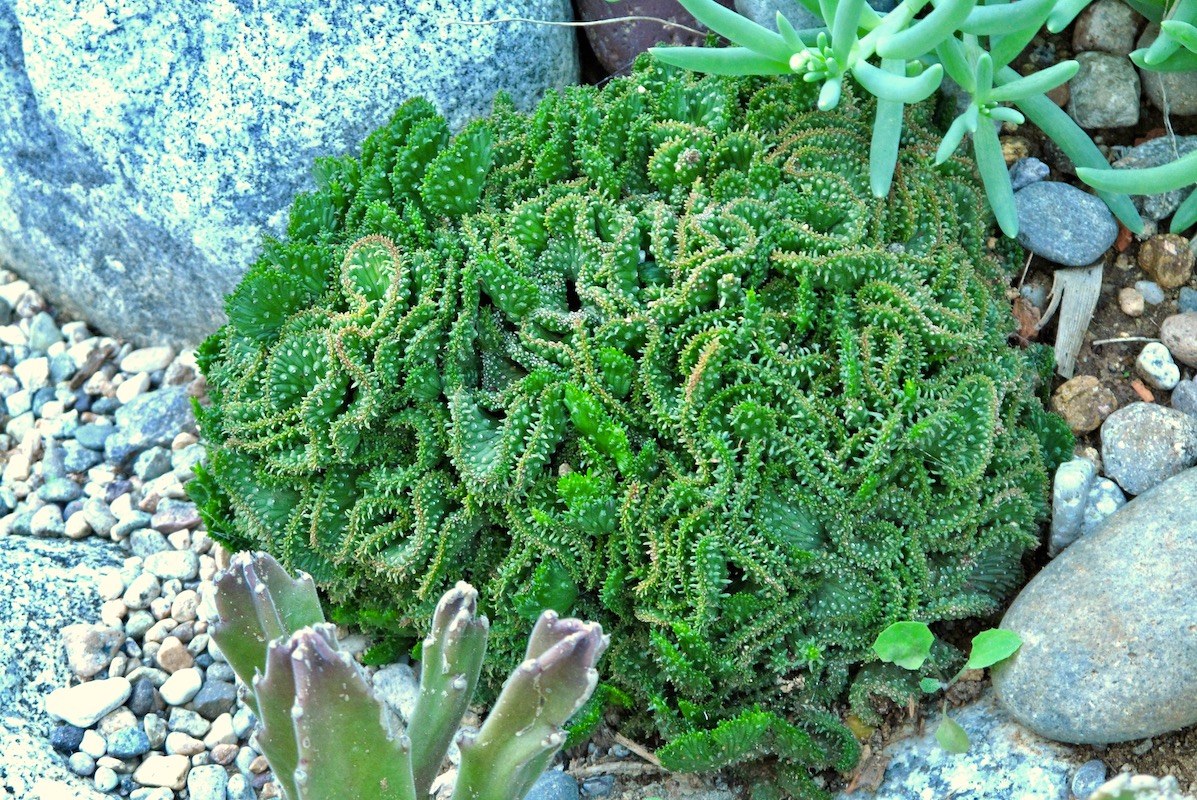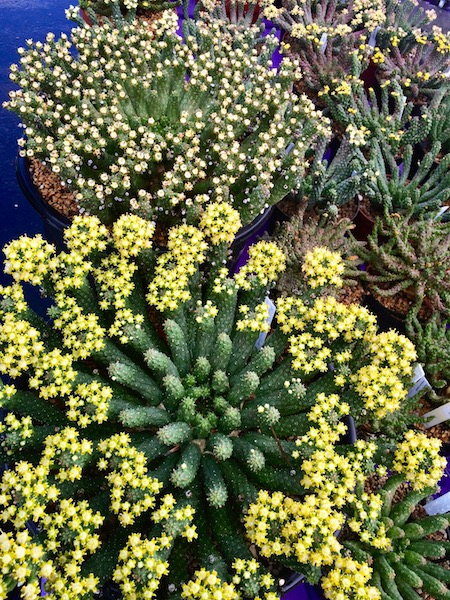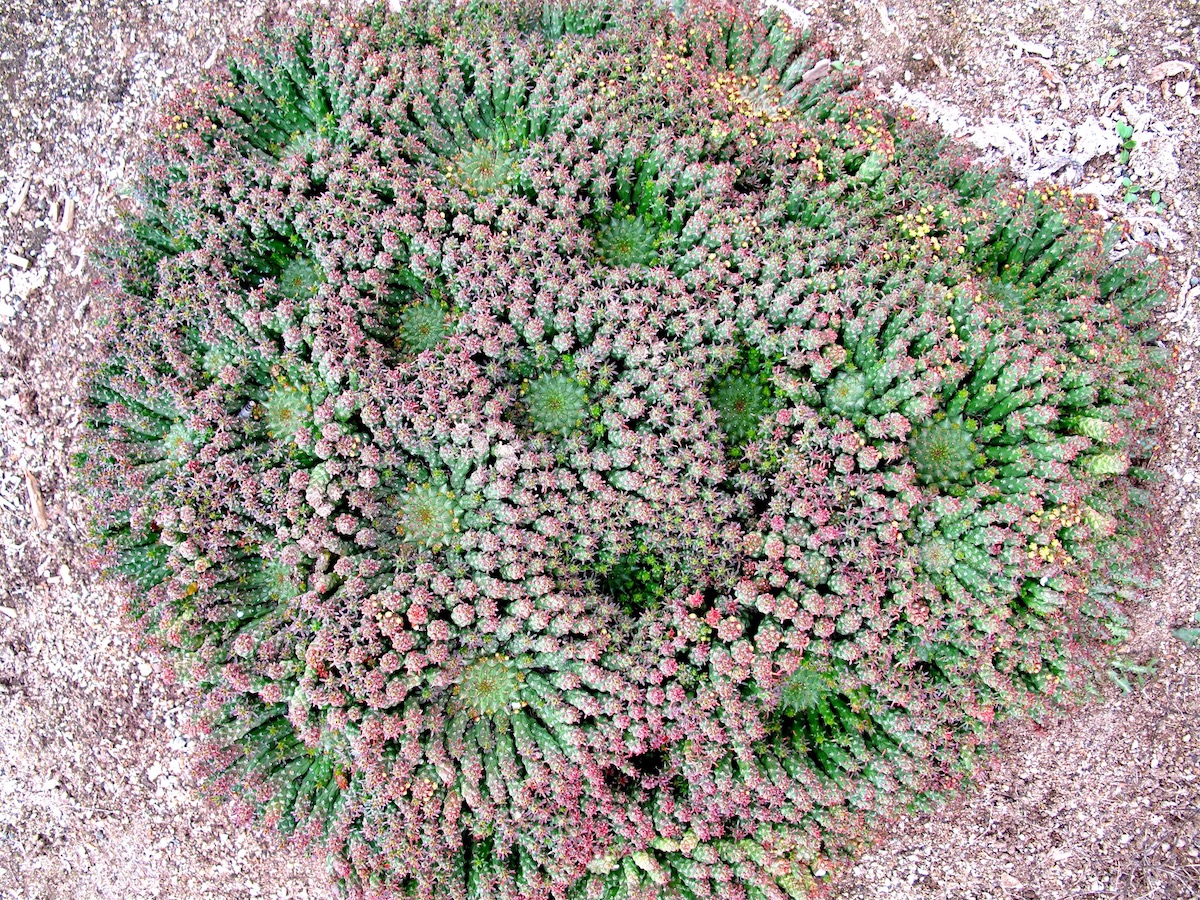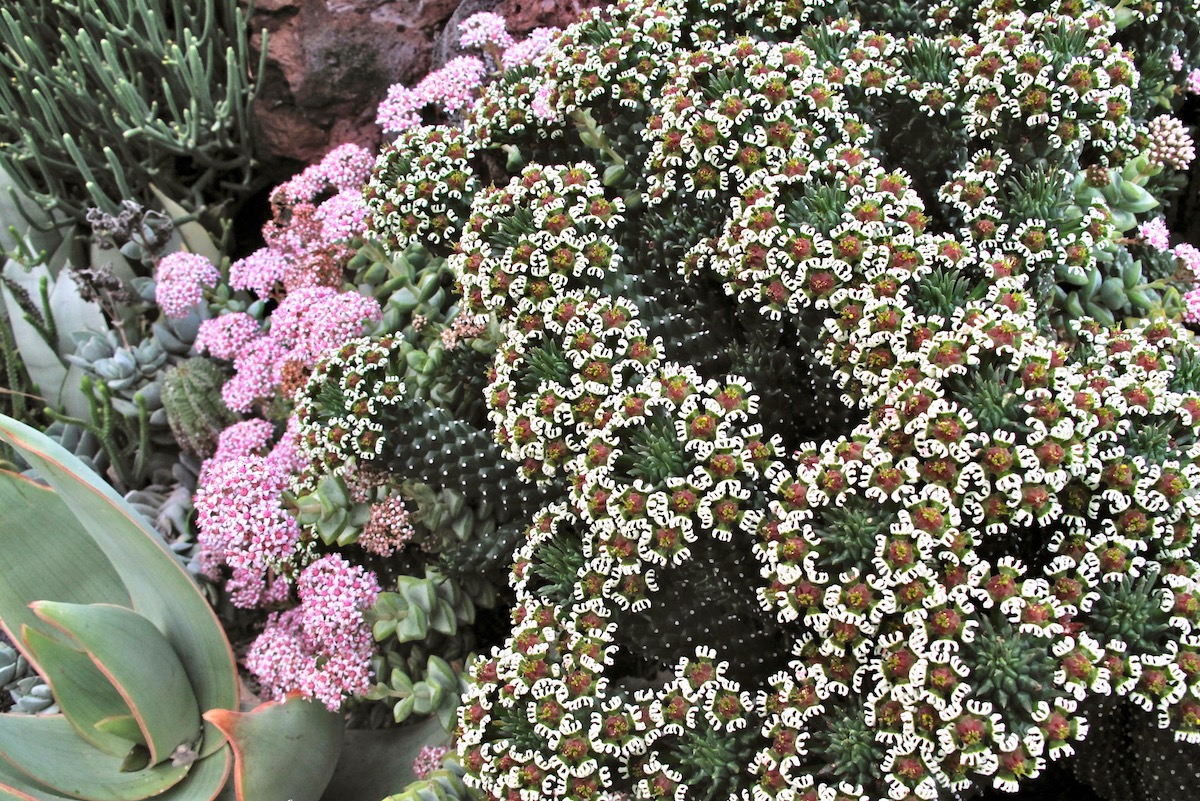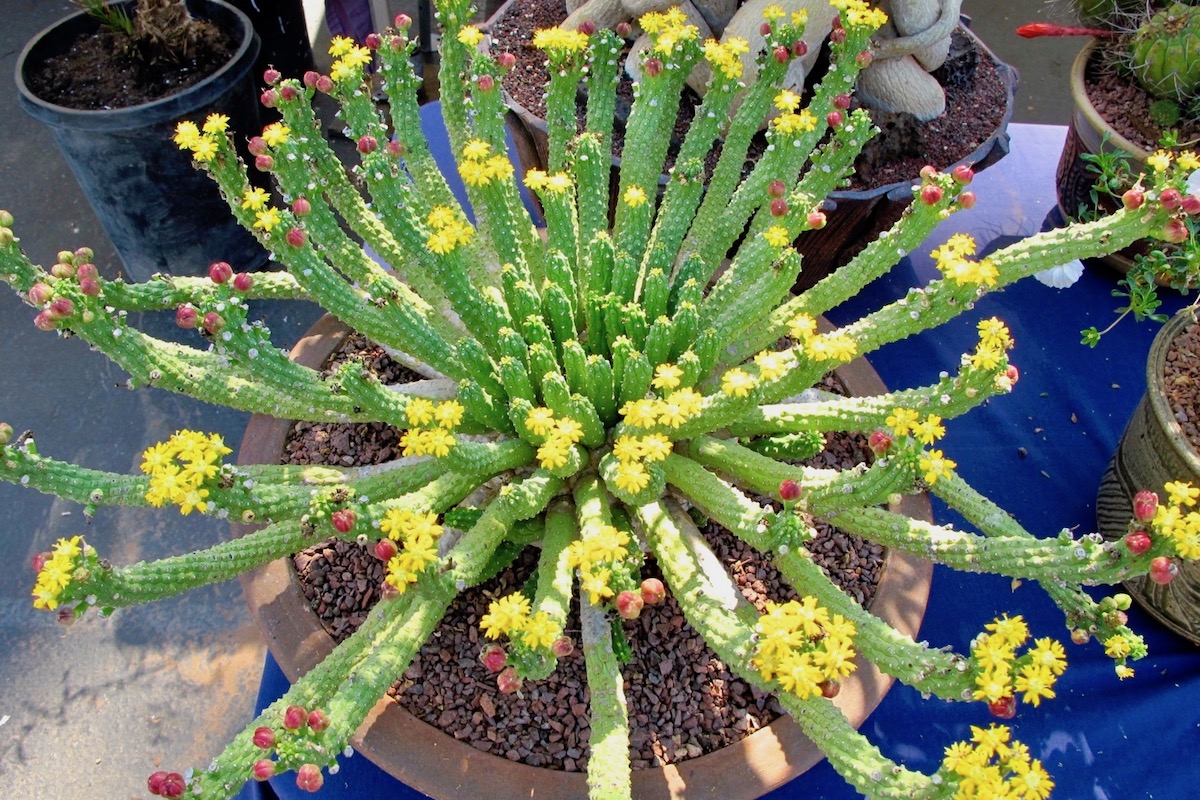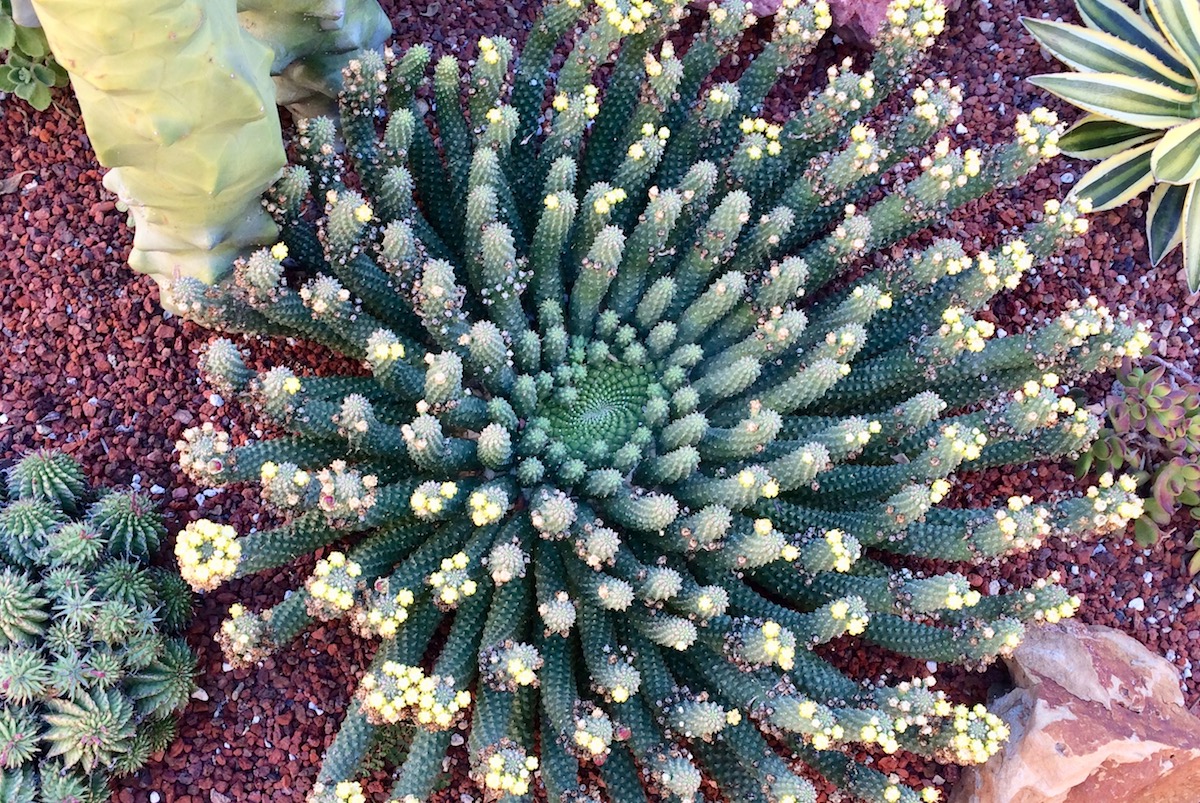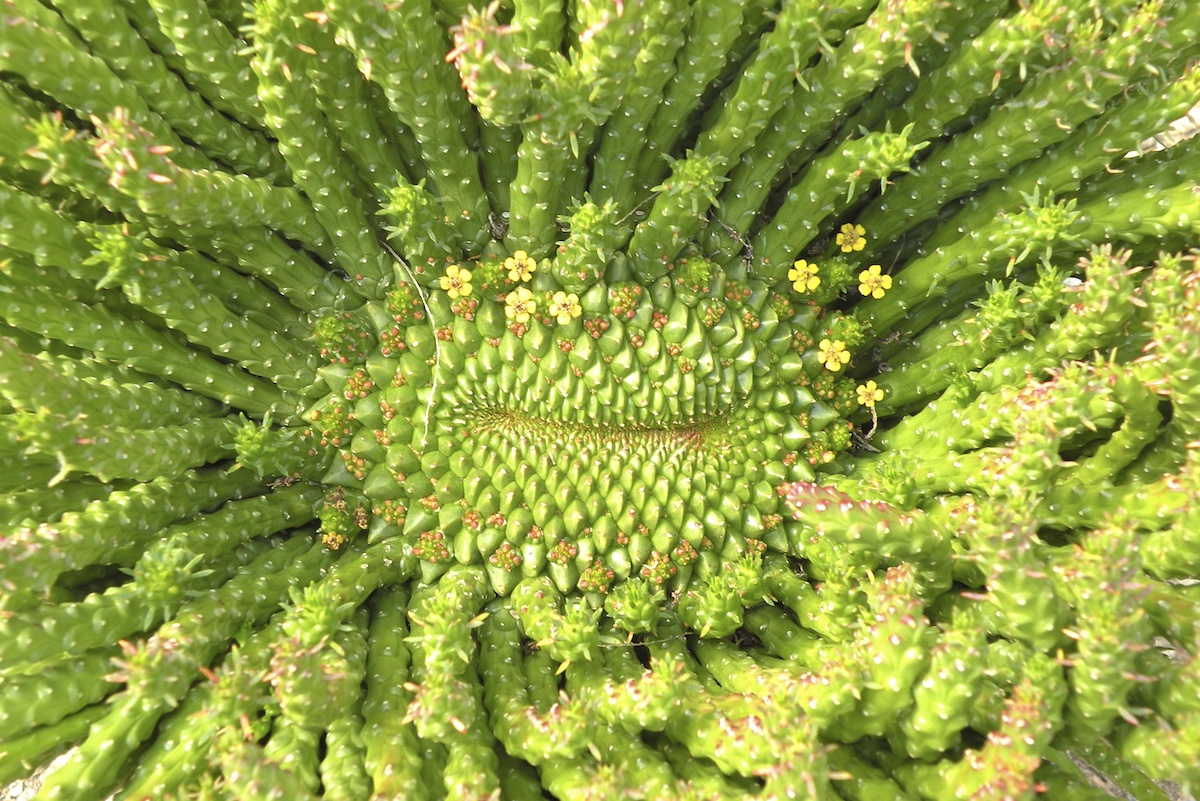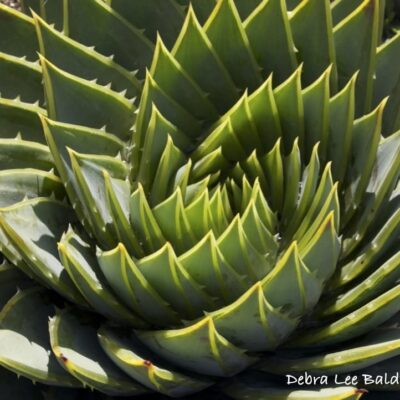When I saw the photos that "Celebrating the Joy of Succulents" newsletter subscriber Pat Armanino emailed me of her garden, I knew I wanted to share them. Pat's use of galvanized water troughs as succulent containers is clever and eye-catching. But her main reason for using troughs, she told me, is that they make gardening in a wheelchair possible.
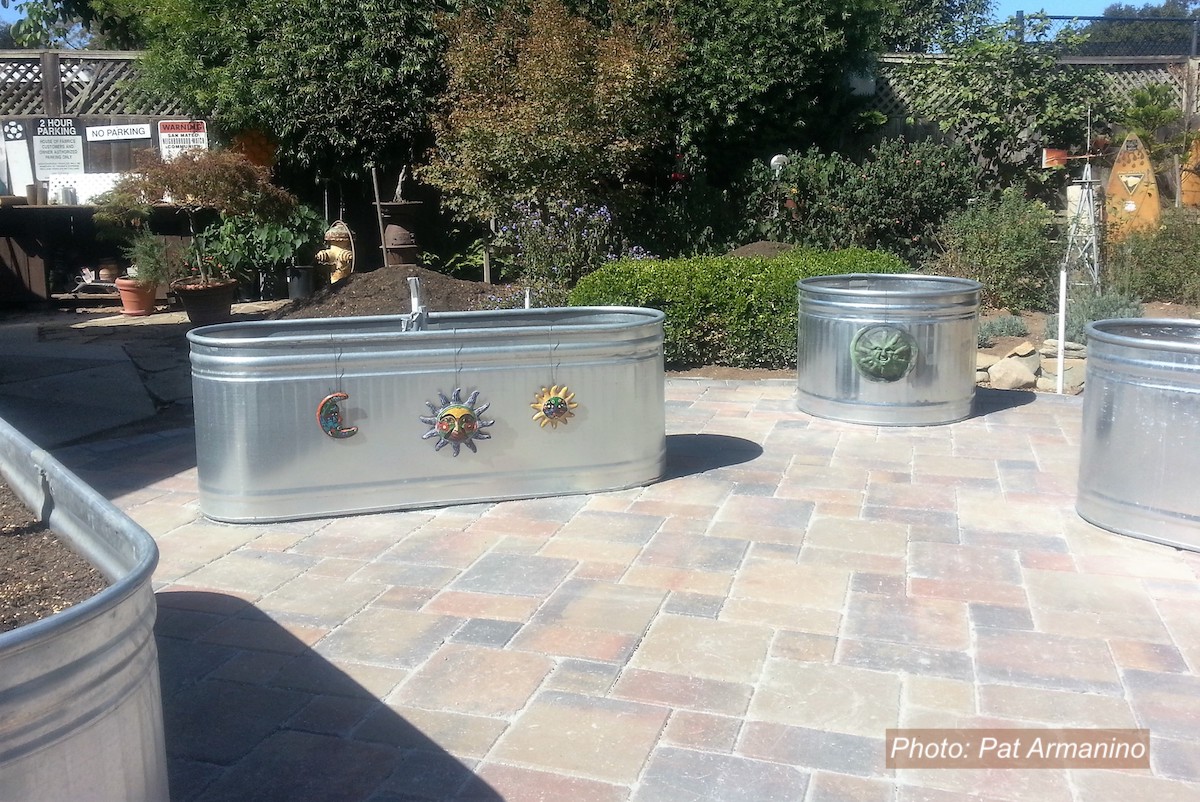
Pat originally used wire to attach ceramic suns to steel troughs. She now simply Gorilla-glues magnets to the backs of decorative items.
"I've grown succulents for 17 years, 13 in a chair," Pat says, "and five with water troughs." Conventional raised beds weren't a good option, because stone, brick or wood surfaces are too wide to lean over comfortably, and are rough-textured. "I'd have to wear long sleeves to not scrape my arms."
Trough rims are narrow and smooth; their sides, thin and strong. The 2-foot-high troughs came from a feed store, but are also available on Amazon. They come with plugged holes, Pat notes, "but we added drain holes, too."

Pat's wheelchair-accessible succulent garden is where a lawn once was. Water drains through the tanks into sand-filled gaps between pavers.
Troughs are filled with layers of rock and garden soil, "topped off with eight inches of potting soil," Pat says. She installed the troughs "after I retired five years ago, and nothing so far has rusted or gone wrong." They're on drip irrigation installed beneath pavers and threaded through drain holes.
The climate of San Mateo, CA, where Pat and her husband have lived for 46 years, is Zone 9, with rainy winters often followed by frost. She covers her succulents "with frost blankets" as needed.

Echeverias, aloes and other succulents thrive in Pat Armanino's garden
Also five years ago, Pat and a friend went on a road trip to obtain succulents "only sold in Southern California," she recalls. Many---including ruffled echeverias---are still going strong. She estimates the total number of succulents in her garden to be around 500.
Pat takes cuttings, pots them up and uses them to fill gaps or give away. Every May, just before Mother's Day, she hosts a charity fundraiser "planting party," now in its 7th year. Guests bring their own pots, "and if they see a plant they like, they take cuttings and plant them," she says.

On a deck outside her dining room, Pat cultivates dozens of colorful succulents in pots large and small. "The tall ones in back aren't easy to access, but if it takes me all day to get to something, that's OK," she says. "This is my hobby."
Pat finds pots at garage sales for an ever-growing collection that includes senecios, haworthias, crassulas and more. "I'm always looking for something I don't have," she says.
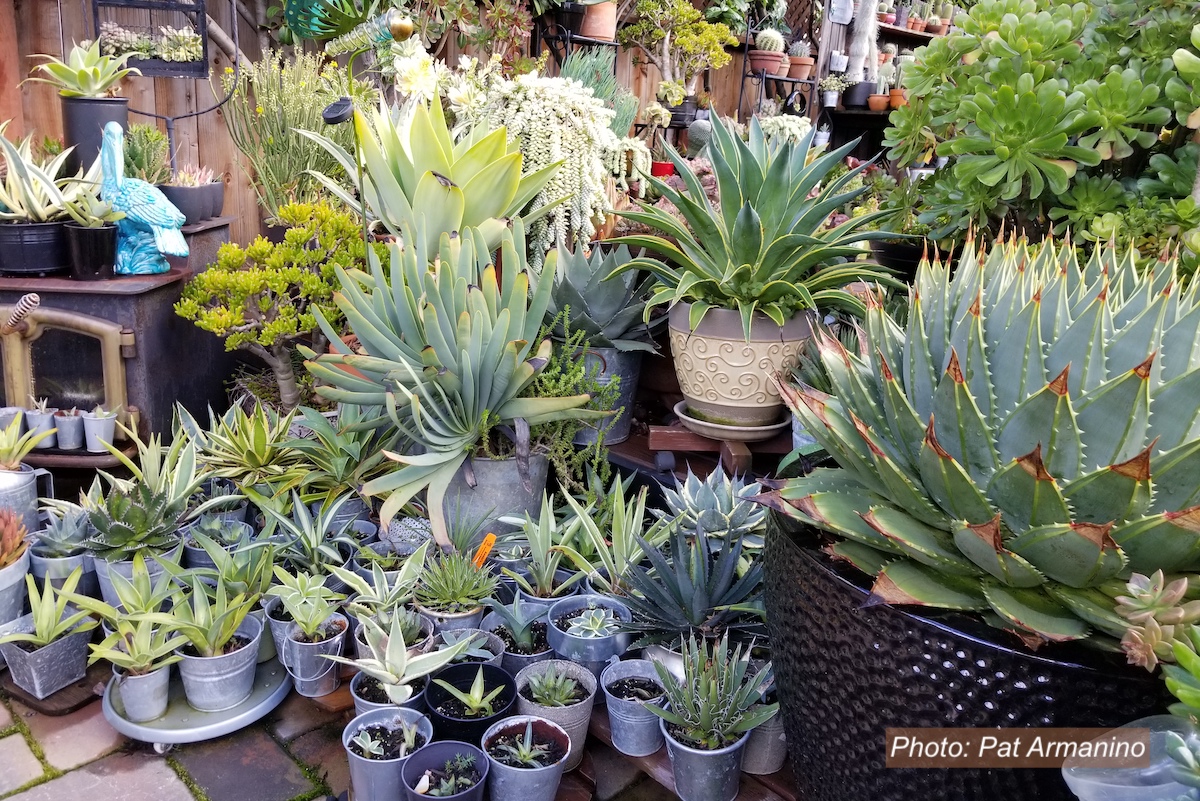
Agaves predominate an area of the garden that includes Aloe plicatilis left of center, a spiral aloe (Aloe polyphylla) at right, and aeoniums in back.
Pat's plants---plus her grandchildren's---have earned dozens of blue ribbons at the San Mateo County Fair. "But it's not about me," she says. "It's all about showing people what they can do with succulents."
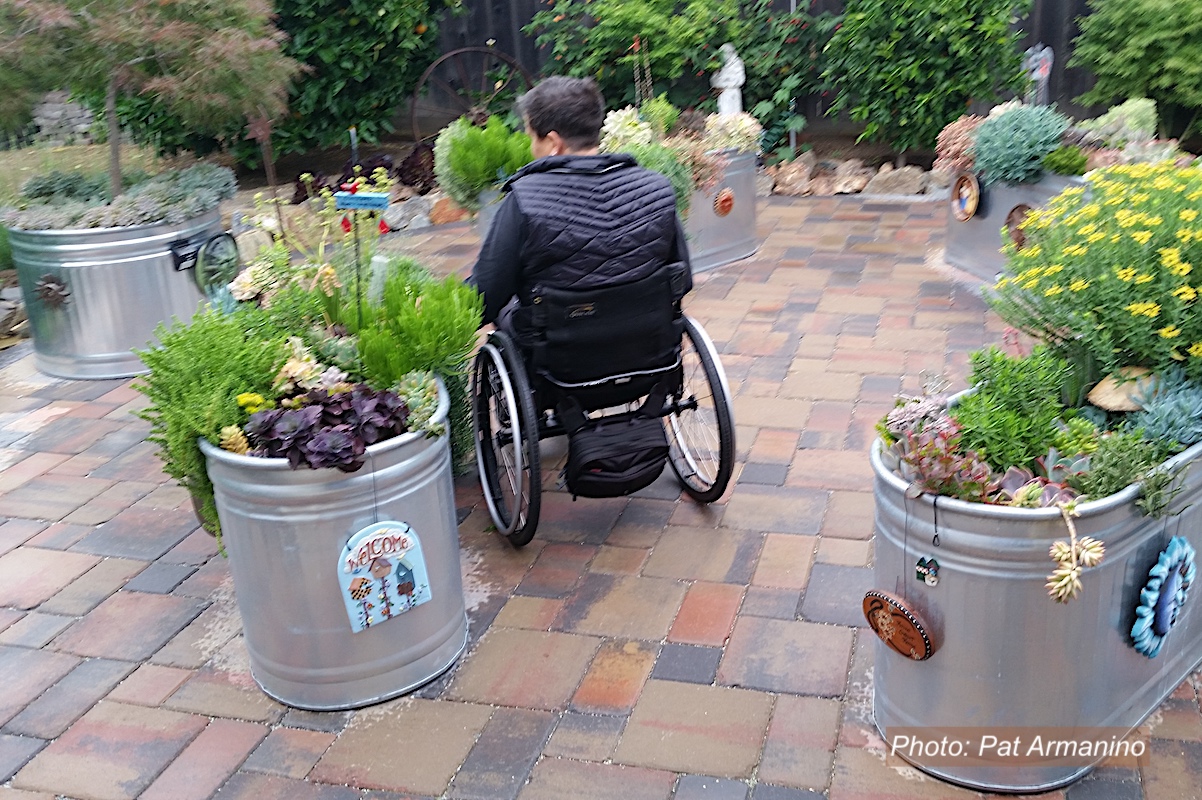
Pat Armanino tends her water-trough succulent garden.
Succulent Container Design
Succulent Container Design Design ideas and must-dos for beautiful, easy-care potted succulents Here you’ll find info on succulent container design in articles and videos. Scroll down to see what interests you and meets your needs. Also enjoy and find inspiration in my gallery of 150+ floral-style arrangements! Designing Succulent Container Gardens DIY Floral-Style Succulent Centerpiece…
The post Wheelchair Accessible Succulent Garden appeared first on Debra Lee Baldwin. Copyright © Debra Lee Baldwin.
from Debra Lee Baldwin https://ift.tt/2pyD55N
via IFTTT

